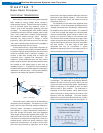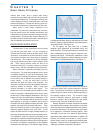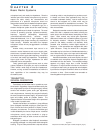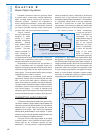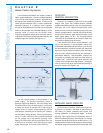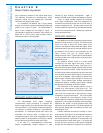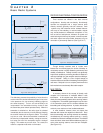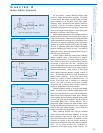
microphone level, and usually low impedance. Since the
"wireless" part of the wireless microphone only serves to
replace the cable, ideally, the characteristics and
performance of a particular microphone should not
change when used as part of a wireless microphone system.
Therefore, the selection of microphone type for a
wireless microphone system should be made following
the same guidelines as for wired microphones. The usual
choices of operating principle (dynamic/condenser),
frequency response (flat/shaped), directionality
(omnidirectional/unidirectional), electrical output
(balanced/unbalanced, low or high impedance), and
physical design (size, shape, mounting, etc.) must still be
made correctly. Problems that result from improper
microphone choice will only be aggravated in a wireless
application.
Another widely encountered input source is an
electronic musical instrument, such as an electric guitar,
electric bass, or portable electronic keyboard. The signal
from these sources is again audio frequency, microphone
or line level, and usually high impedance. The potentially
higher signal levels and high impedances can affect
transmitter choice and operation.
Finally, general audio signal sources such as mixer
outputs, cassette or CD players, etc. may be considered.
These exhibit a wide range of levels and impedances.
However, as long as these characteristics are within the
input capabilities of the transmitter they may be
successfully used.
TRANSMITTER:
GENERAL DESCRIPTION
Transmitters can be either fixed or portable as men-
tioned earlier. Regardless of type, transmitters usually fea-
ture a single audio input (line or microphone type), minimal
controls and indicators (power, audio gain adjustment)
and a single antenna. Internally, they are also functionally
the same, except for the power supply: AC power for fixed
types and battery power for portable models. The
important features of transmitter design will be presented
in the context of portable units.
Portable transmitters are available in three different
forms: bodypack, handheld, and plug-on. (See Figure 2-2.)
Each of these has further variations of inputs, controls,
indicators, and antennas. The choice of transmitter type
is often dictated by the choice of input source: handheld
microphones usually require handheld or plug-on
transmitters while nearly all other sources are used with
bodypack types.
Bodypack (sometimes called beltpack) transmitters
are typically packaged in a shirt-pocket sized rectangular
housing. They are often provided with a clip that secures
to clothing or belt, or may be placed in a pocket or pouch.
In theater and some other applications they may be
concealed underneath clothing. Input is made from the
source to the bodypack via a cable, which may be
permanently attached or detachable at a connector. This
connector may allow a variety of input sources to be used
with one transmitter.
Bodypack transmitter controls include at least a power
switch and often a separate mute switch, allowing the
audio input to be silenced without interrupting the radio
signal. Other controls may include gain adjustment,
attenuators, limiters and, in tuneable systems, a provision
for frequency selection. Indicators (usually LED’s) for
power-on and battery condition are desirable, while
tuneable units sometimes include digital readouts of
frequency. A few transmitters are equipped with audio
"peak" indicators. Finally, the antenna for a bodypack
transmitter may be in the form of a flexible attached wire, a
short "rubber ducky" type, or the input source cable itself,
such as a guitar cable or lavaliere microphone cable.
Handheld transmitters, as the name implies, consist of
a handheld vocal microphone element integrated with a
transmitter built into the handle. The complete package
appears only slightly larger than a wired handheld
microphone. It may be carried in the hand or mounted on
a microphone stand using an appropriate swivel adapter.
Input from the microphone element is direct via an internal
connector or wires. Some models have removable or
interchangeable microphone elements.
9
Selection
and Operation
of Wireless Microphone Systems
C HAPTER 2
Basic Radio Systems
Figure 2-2:
examples of transmitters (left to right: handheld, bodypack, plug-on)






